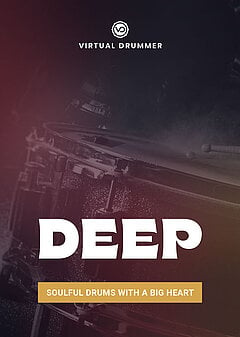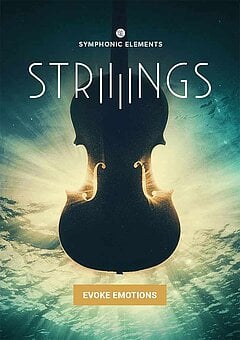How to Learn Music Theory Quickly
The essentials you need to write better songs, faster — improving your melody, harmony, and overall music production skills in the process.
JANUARY 31ST, 2021
Why learn music theory? Because when you understand the fundamentals and can apply them, it becomes much harder to write a bad song. You’re giving yourself a leg up toward becoming a better, faster, and more versatile music producer, freeing yourself up to actually focus on the production aspects.
Can I teach myself music theory?
Have you ever worried that music theory is something you can only learn in school? Or that it will take years and years if you try to do it on your own? (Plus, you want to drop that new house track now ... not in 3 years once you’ve learned how to do things the “right way,” right?)
Don’t worry — it’s completely possible to teach yourself with the free resources available online. There are plenty of excellent paid tools and courses available to accelerate the learning process, but hope isn’t lost if these aren’t an option for you. So how should you start?
YouTube, articles, books, and virtual group study sessions are all great. But as for what you should study first ... well, that’s what the next two sections are about.
How to learn chords without making yourself miserable
First, pick out 5 songs you love — preferably, every single one should be a different genre. Next, go through one by one and figure out the chords by playing them on your instrument of choice (usually the keyboard is the easiest option). Use it as a tool to identify the correct chord — for more info on how chord progressions are constructed, check out our article, How to Create a Chord Progression.
When you can play a progression from memory, you can write it out by hand (though you don’t have to) — pay close attention to the relationships between the chords: their intervals, the order of the progression, how they sound and how that contributes to the overall arrangement, etc. Take notes if you can. Especially pay attention to differences and similarities between the songs.
Once you’ve gone through your initial 5, pick out 5 more, preferably in the same genres as before, and ideally ones that sound very different than those in the first set. You want to get a sense for the variety you can expect within each genre and have multiple genres to pull from — this will increase both the depth of your knowledge and your overall creativity.
By the way, a great side effect of this is that you’ll be improving your musical ear, which will help you to passively pick up more detail in every song you listen to and make the entire production process faster and easier.
Scales and chords
Studying scales can be terribly boring at first ... but it gets much more interesting once you realize how much better it makes you at everything else.
Scales are incredibly important — without a clear understanding of them, you can’t create great melodies, plain and simple. But there’s some good news: if you’re already studying chords, you’re almost halfway through understanding scales (a chord has 3 or 4 notes out of a scale ... and most scales only have 7 notes to begin with)! There are 7 scales in particular, called ‘modes,’ that you should pay attention to. You can hear what each of them sound like simply by playing only the white keys on a keyboard and changing only the note you start on:
- Ionian: C D E F G A B
- Dorian: D E F G A B C
- Phrygian: E F G A B C D
- Lydian: F G A B C D E
- Mixolydian: G A B C D E F
- Aeolian: A B C D E F G
- Locrian: B C D E F G A
If you transpose those half step / whole step intervals to any other key, you’ll get that mode’s scale in that key. For example:
- F dorian: F G Ab Bb C Db Eb
- A ionian: A B C# D E F# G#
- D phrygian: D Eb F G A Bb C
This will make a lot more sense if you try playing the notes in each of these scales in sequence — it can be tough to wrap your head around until you get each one of these under your fingers! The beautiful thing is, though, once you know the 7 modes / scales by heart, you can see where the chords come from by picking out the 1st, 3rd, 5th and (optionally) 7th notes of the scale like so:
- D minor 7th (D F A C): aeolian, dorian or phrygian scales
- G major 7th (G B D F#): ionian or lydian scales
- A half-diminished 7th (A C Eb G): locrian scale
Again, don’t sweat it if this doesn’t click immediately — try playing these chords and scales, and transpose them to other keys if you can. Once you do this for every key, music theory will suddenly make much more sense, possibly very suddenly. If you want to go down the rabbit hole, LANDR has a great article that goes into modal scales in far more detail.
Form: Song structure and sections
Once you understand the fundamentals of chords and scales, it’s time to study form: the structure of a song, and the relationship between different sections. In EDM, the order of different sections might be: intro, verse, chorus, build, drop, verse, chorus, outro. Every genre plays with form a little differently, and borrowing from other genres is one of the easiest ways to create something different. In principle, the order of the sections and how they’re connected does matter ... but not as much as you might think. Let your ear decide what’s good and bad. As long as you don’t do anything overtly ridiculous (like putting your outro first), it’s typically sufficient to know the different types of sections mentioned above.
Study the same songs you used in the chord exercise earlier and attempt to pick out the different sections — break them down into subsections if you like, and feel free to name those whatever you want! See what you can learn, and try applying pieces of those forms to your own music. This can provide a huge boost in production speed, because you longer have to worry about ruminating over what type of section should come next — you can just reference the templates you’ve created and you’ll have something you can immediately implement when you’re not feeling inspired! That’s one of the coolest things about learning music theory — the more you know, the less you have to rely on inspiration ... because you can combine different things that you already know will work!
What else is there to learn?
Rhythm is another important consideration, and to read up on that you can read our article, The Ultimate Guide to Rhythm — you’ll find most of the fundamentals you need in there! Other than rhythm, there are other elements to consider: melody, counterpoint, harmony, intervals, and many other aspects — but most of those boil down to chords and scales.
The fastest way to learn music theory is to apply this information in regular practice, and not simply read, watch YouTube videos and learn the principles without attempting to use them in the songs you write. There’s no substitute for applying music theory in your own songs, and it truly solidifies the info in a way that’s accessible when you go to write music in the future.
Improving your practical understanding of music theory is critical to increasing your skills as a music producer, because when you no longer apply brain power consciously thinking about the song’s construction, you have more bandwidth to make smart and creative decisions about its production. Your world opens up, and your ability to pull influences from other songs improves, increasing the mental database you’re able to pull from. Keep working at it, and soon you’ll be able to use your musical influences more effectively than ever before — and create much better tracks in the process.
Stay up to date
Sign up and we’ll send you an e-mail with product news and helpful stuff every now and then. You may unsubscribe at any time.
Defy Limits
We develop software solutions that enable people to create, consume and interact with music.




